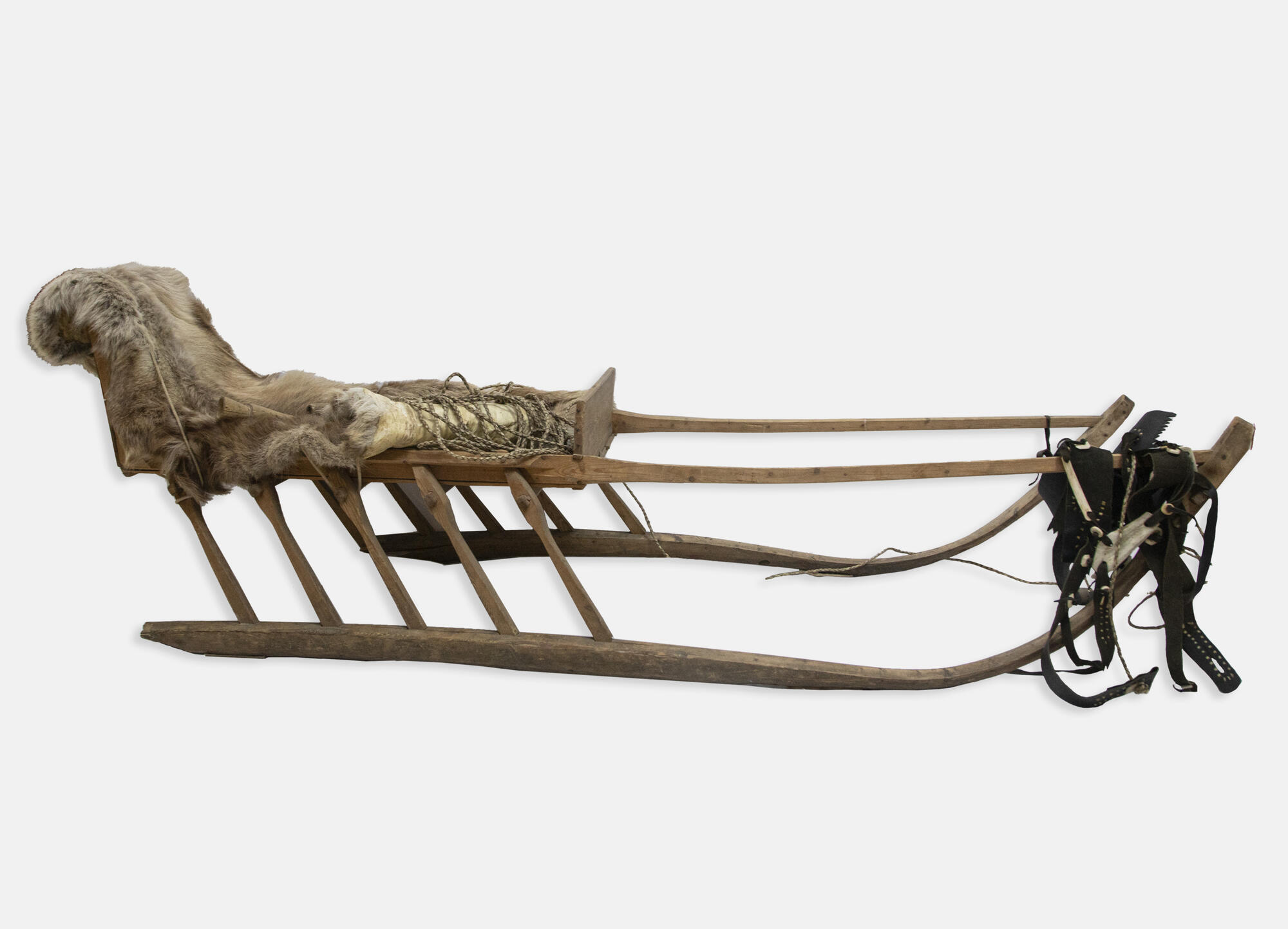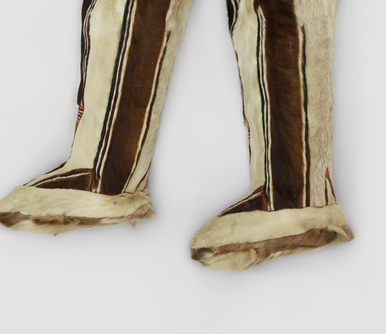The indigenous peoples of the North use narrow wooden sleds all year round. They travel hundreds of kilometers in search of new pastures for their reindeer herds. The general design of sleds has remained unchanged for around six thousand years, but they vary in size, shape, and purpose.
Sleds are pulled by deer and, less commonly, dogs. There are also hand sleds used by hunters. Modern nomads use snowmobiles instead of draft animals. When nomads travel to a new location, they combine their sleds into a “train” called an “argish”. The leading sled in the train is that of the head of the family, and the last one is a sled carrying poles of the portable house known as a “chum”.
The reindeer are controlled using voice commands, reins, and a khorey. A khorey is a pole with a length of around three meters and a round wooden or bone tip. In the past, it was also used to test the strength of ice and, if necessary, to defend oneself while traveling.
The Nenets Museum of Local Lore houses a men’s passenger sled. Sleds can also be divided into summer and winter ones. The winter one is lower and has no backrest, and the cargo bed is less dense. Men’s sleds are lighter and more maneuverable than women’s ones. In addition, women’s sleds are equipped with borders on three sides to ensure safety when transporting small children.
Sleds are made of birch, spruce, or larch — these types of wood are strong, elastic, and easy to work with. The main element of sleds is the runners. They are made of logs with an average thickness of up to 12 centimeters. It takes several days to make the runners. A workpiece is carved, soaked in water, steamed over the fire, bent by hand, and given the necessary shape using special stretching devices. After drying, the runners are shaved to achieve the required size, and holes are drilled for fastening.
The cargo or passenger platform is attached to the runners
using stanchions. They flare at the bottom, making the sled more stable.
Traditionally, sleds are assembled without nails and screws, using only wooden
pegs and plant ropes. As a result, during a long or solitary journey, the sled can
always be repaired without any spare parts and tools, using only natural
materials.


